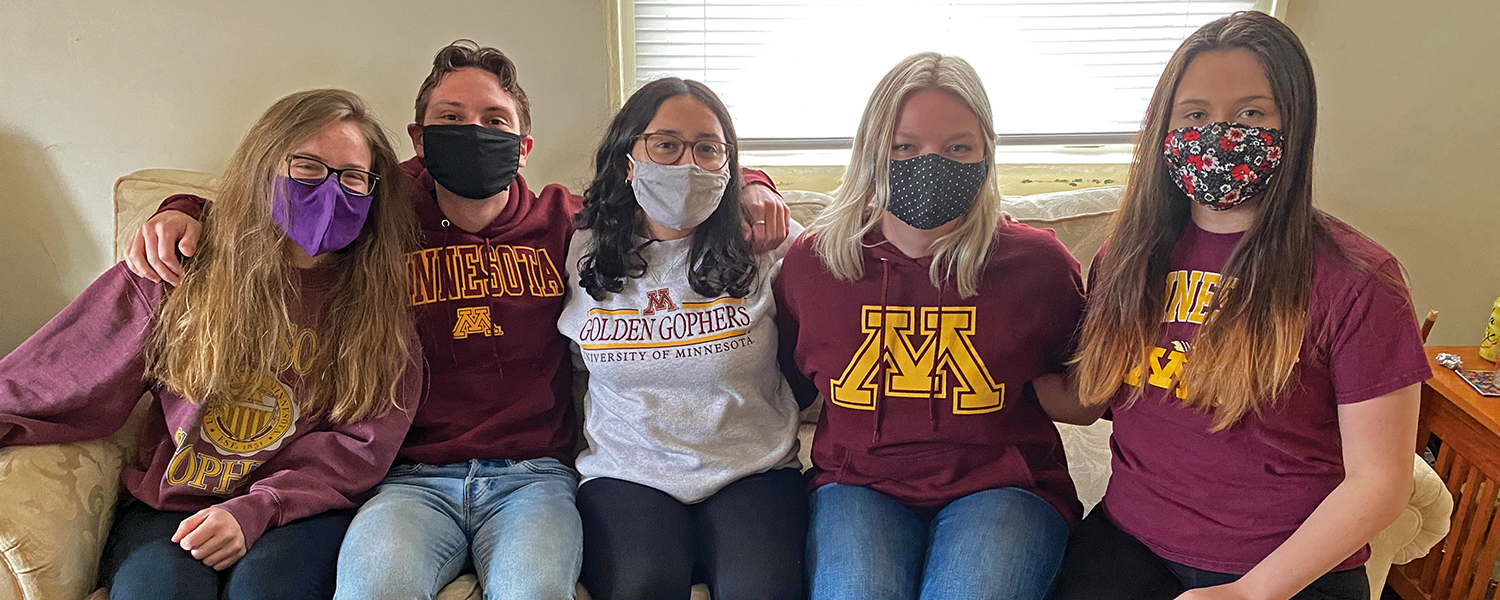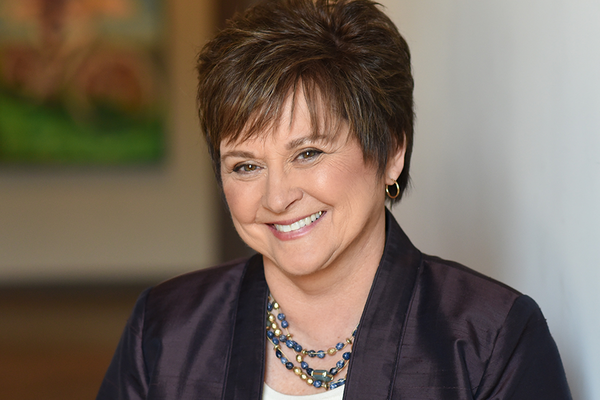Innovation aims to reduce maternal mortality
Biomedical engineering students’ invention assists in diagnosing hemorrhage, a leading cause of maternal deaths
November 2, 2021
Susan Maas

From left, Lexi Kedzierski, Josh Stadler, Emma Sethi, Rachel Gasser and Emily Chandler.
The maternal mortality rate in the U.S. is the highest of any developed country, and that rate — currently 17.2 per 100,000 — keeps climbing. Moreover, most of those deaths are preventable.

Five University of Minnesota biomedical engineering students and one experienced nurse-midwife, Assistant Professor Carrie Neerland, PhD, APRN, CNM, FACNM, set out to help change that. Through a connection Neerland made with Shai Ashkenazi, associate professor of biomedical engineering in College of Science and Engineering, she became clinical adviser to the team of fourth-year engineering undergrads and helped them develop the DuoPouch: a calibrated, two-pouch drape to diagnose postpartum hemorrhage, a leading cause of maternal deaths.
The DuoPouch was recognized by the National Institutes of Health and VentureWell with an honorable mention for innovation in the 2021 Design by Biomedical Undergraduate Teams (DEBUT) Challenge. The team accepted the honor, which includes a $1,000 award, at the annual Biomedical Engineering Society Conference in early October. The device was also featured in the department’s Senior Design Showcase in May, where it won a People’s Choice Award.
The students decided, early on, to focus their project on a childbirth-related innovation. “I hoped to introduce them to thinking about design from a feminist perspective and putting the pregnant person first,” Neerland says. She suggested they conduct focus groups, interviewing obstetricians, labor and delivery nurses, and nurse-midwives to learn about some of the hurdles in their work.
Currently, many labor and delivery units use plastic drapes designed for urology. It’s not a great solution, Neerland says. “We have to open up this mesh part to get it even to work correctly for us, because it’s not made for a birth,” she says. “The plastic isn’t the most comfortable, and often the blood slides back beyond the person’s buttocks,” she explains. “One of their innovations was to have the drape be made of a fabric-like material that’s more comfortable.”
Another was to make a two-pouch system: one pocket to capture amniotic fluid, if the patient’s water breaks, and another to capture blood. That pocket has measurements on it. “Studies show that we greatly underestimate blood loss when we ‘eyeball,’” Neerland says. The measurements on the DuoPouch pockets allow providers to accurately gauge, at a glance, just how much blood the patient has lost. “The calibrations let you monitor blood loss in real time, to help the clinician make decisions about whether or not they’re going to need to use any corrective measures to prevent further blood loss.”
Rachel Gasser, a member of the design team who’s beginning her master’s in biomedical engineering at the U, found the process eye opening. “There’s a lot of research and money going into other fields, while labor and delivery is seen as something that just happens,” Gasser says. “Maternal health isn’t perceived as the priority that other things are.”
The DuoPouch is elegant in its simplicity. Neerland and the students say that’s one of its best attributes. “Let’s talk about how sometimes simple projects are just as important. Something that’s simple and wouldn’t have to be very costly could save lives globally,” Neerland says.
Gasser concurs. “Often in school, we learn super complicated things: ‘look at this really cool, difficult invention. Let’s see how crazy we can make it,’” she says. “There’s not a lot of emphasis on simplicity.”
One professor suggested adding sensors to the design, Gasser recalls. “And we’re like, ‘Honestly, no, we want it to be very straightforward.’ This could be used anywhere — not just in hospitals, not just in places with electricity — because people give birth everywhere. And people are suffering unnecessarily.”
Neerland found it rewarding to help their invention come to fruition. “A couple of them have expressed interest in doing more work related to women’s health,” she says proudly. “I’m glad to have helped them really bring in the patient’s perspective.” She hopes to be part of more such collaborations in the future, especially if institutional support could create dedicated time for cross-disciplinary work between nurses and engineers. It’s an underexplored realm, Neerland believes.
“Nurses are making adaptations to existing tools all of the time,” she says. When a team of fledgling engineers bring their skills and creativity to the process, so much the better.

